Table of Contents
Your eCommerce brand needs to have the best email marketing campaigns, that’s a fact. To say that email marketing is the secret weapon for hungry leads would be incredibly misleading. After all, the benefits of building your mailing list are anything but a secret for today’s eCommerce brands. Think about it. The concept of encouraging opt-ins to grow your sales is nothing new. Despite rumblings from critics of the future of email, 93% of B2B companies run email campaigns to distribute content.
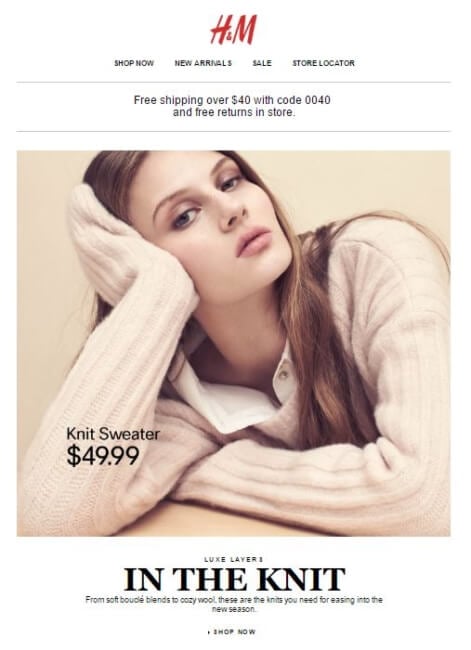
In other words, email marketing is here to stay. From valuable how-to content and lead magnet offers to opt-in opportunities sprinkled throughout social media, most brands are familiar with what it takes to turn their traffic into leads via email.
But it’s what happens after the coveted opt-in that’s the thorn in the side for most marketers. In fact, only one-third of marketers claim a “very successful” ROI via email automation despite its promise.
What gives? While there are plenty of potential rewards to reap through email marketing, there’s just as many pitfalls. Let’s be honest: the legwork involved with a successful email campaign is nothing to scoff at. For starters, you need to know your audience and understand what types of messages they want to see. Oh, and your emails can’t look like generic, run-of-the-mill fluff or in-your-face advertisements.
One more thing: you have to write compelling copy to keep readers engaged enough to actually open, read and click through your messages versus your competition’s. And so on.

Exhausting, right? Yet despite the millions of moving pieces of email, the rewards of a strategic campaign are far too great to ignore. Listen: if you’re an eCommerce brand that’s been sleeping on email marketing for whatever reason, it’s time to wake up.
Maybe you haven’t really put enough of your resources into email.
Perhaps your strategy just isn’t quite there yet.
Meanwhile, the numbers don’t lie in regard to just how important your list is to your bottom line. Despite the struggles of many brands, email consistently has one of the highest ROI of marketing platforms with approximately $42 earned for every $1 spent.
Here’s some food for thought: an engaged opt-in list is one of the most prized possessions of modern marketing.
Why’s that? Remember: opt-ins represent your hottest prospects who actually want to hear from you versus tepid organic traffic that stumbles on your site and takes no action. Similarly, you can sell to your list time and time again if (and only if) your messages are meaningful to readers.
Repeat business is the bread and butter of eCommerce and email is the not-so-secret sauce to making such sales a reality.
Thankfully, some eCommerce brands have mastered the art of giving their readers exactly what they want.
Why not take the time to learn from the best of the best?
Forget how big or small your list is. Don’t worry about what you’re selling. Any combination of the following principles can be applied to any eCommerce industry without fail.
Not all marketing messages are created equal; likewise, there is no one-size-fits-all approach to a successful email campaign.
The best email marketing campaigns are rooted in strategy based on a specific set of goals, not a guessing game.
The good news? You have total freedom to choose your brand’s goals.
The bad news? You can’t just play copycat and do what everyone else is doing: you have to come up with your own strategy and execute it accordingly.
Until you set your goals in terms of what types of messages you want to send and the benchmarks you want to achieve (think: engagement, click-throughs, revenue), you’re flying blindly.
Ask yourself: what are your ultimate goals in terms of your marketing messages? For example:
Any of these goals are fair game for eCommerce brands. In fact, some brands would be best suited using a combination of the aforementioned tactics to engage their list.
For example, check out the following email from Coastal. The message is simple, sleek and piques the interest of the reader, all the while not being totally salesy:
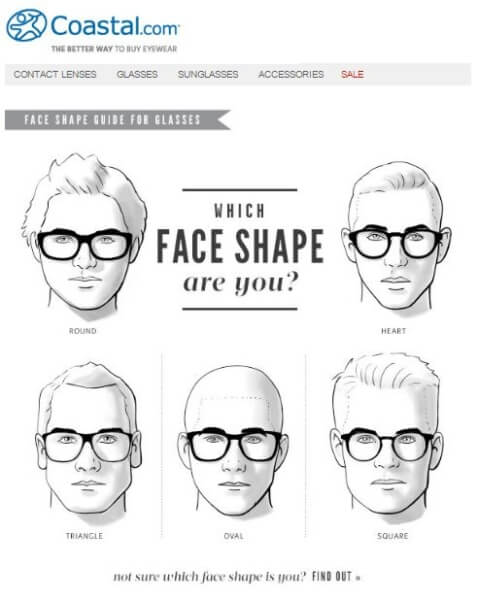
On the flip side, here’s a look at one of Coastal straightforward offer messages:
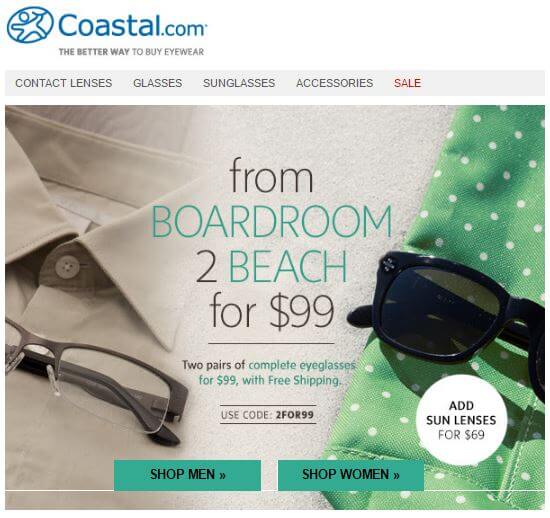
Again, you should have a clear image of what you want to achieve throughout your campaigns. Given that email represents both a financial and time commitment, you need to ensure that every message and dollar spent counts.
If you’re operating in the eCommerce space, your readers know that you’ll be selling them products. Offers, deals and sales language are therefore inevitable: there’s no need to hide them.
That being said, you should strive to be tactful when it comes to how you present offers to your list. While you don’t want to come across as like a used-car salesman, you also don’t want to miss out on potential conversions because your marketing messages are too timid.
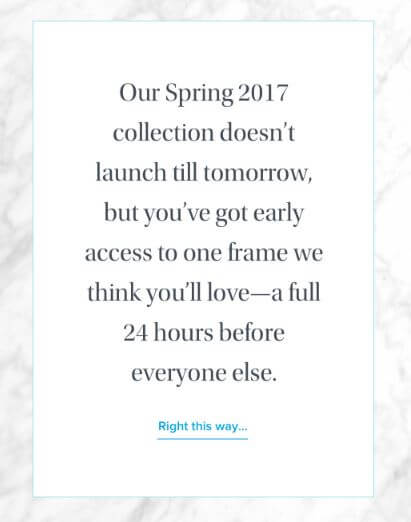
The solution? Choose your words carefully and structure your messages around your offers. The best email marketing campaigns understand where to draw the line in terms of being overly promotional.
How so?
H&M consistently ticks all three of these boxes with their email campaigns:
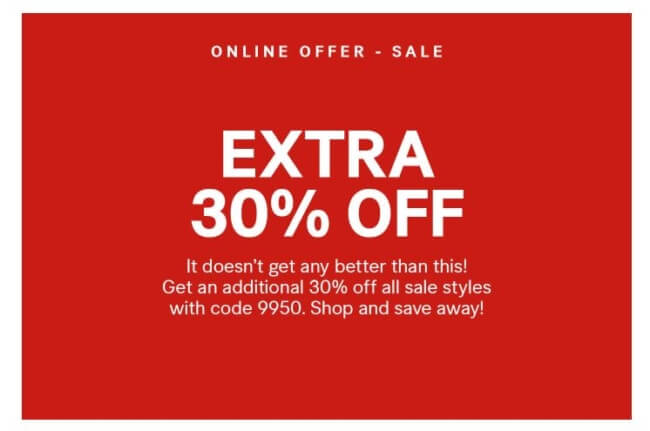
Bold, straightforward and impossible to miss: a prime CTA in action.
Offers or otherwise, all of your emails should give your readers something to do, whether it’s to click a link, check out your store or hit “Reply.”
There are two distinct sets of expectations you need to make apparent to your list from the time they opt-in and start receiving messages:
Let’s start with the first point. Despite popular belief, there’s absolutely nothing wrong with rolling out email campaigns that are purely promotional. In fact, some of the best email marketing campaigns are solely deal-based.
TOMS is a prime example of a company that pushes a high volume of offer emails, although they’re tasteful in their approach:
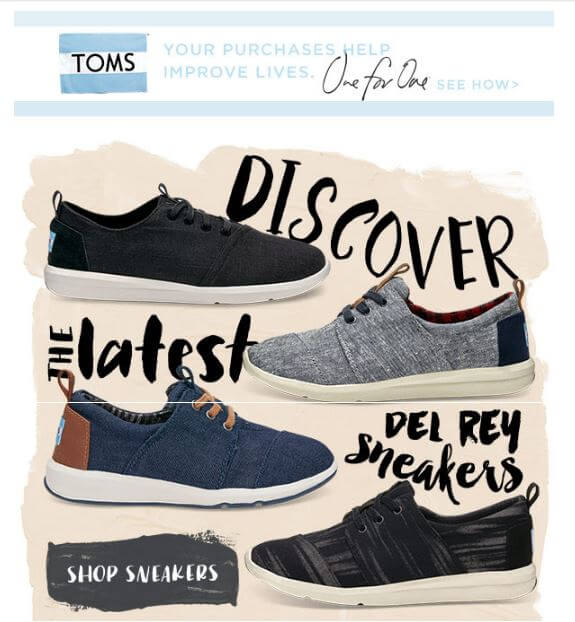
That being said, they also are clear about what to expect via their opt-in form:
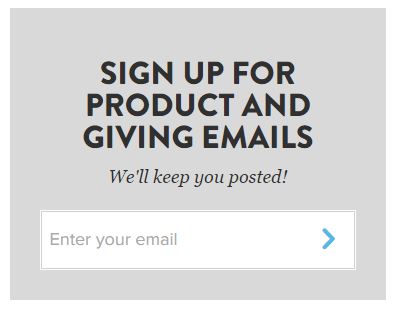
There’s no need to be sneaky about sending deals as long as you’ve outlined the expectation to do so.
Now to briefly address the second point:
Nobody wants to be spammed to death, nor do they want to receive “gotcha” messages that trick them into clicking through. Not only are such tactics in poor taste: they’re also illegal. Failure to comply with legal guidelines such as providing an opt-out option could potentially kill your campaign before it gets started.

While it pays to be creative in your emails, sneak tactics and spam penalties are absolutely not worth the risk.
If you promise fresh content to your list, you need to deliver fresh content.
If you promise deals, you need to deliver deals.
Regardless of what your readers expect, you need to meet the aforementioned expectations.
Every brand wants to promise consistency, but doing so in practice is easier said than done.
Sending consistent messages is perhaps the one aspect of email marketing that’s easiest to screw up.
On one hand, it’s tempting to want to blast as many deals as possible to gain some traction, but that’s inevitably going to annoy your readers. On the flip side, failing to put out enough content could cause your readers to sleep on your offers.
The best email marketing campaigns never miss a beat when it comes to consistent delivery. Checking even the technical front with a DMARC checker (Domain-based Message Authentication, Reporting and Conformance) that helps you verify your safe list of email addresses and email content.
But what’s considered “optimal” in terms of volume?
The ideal amount of messages varies from industry to industry; however, don’t forget that emails do come with a price tag that’s dependent on the size of your list.
Here’s some encouragement, though: studies note that companies who send one emails per month have the highest open rates. While name-brands with more capital have the budget to send more messages, this stat signals good news for smaller eCommerce start-ups who perhaps have to tighten their purse-strings.
But what about messages that are not offer-based? What if you’re not constantly rolling out deals?
Fear not. If you’re strapped for ideas, you always have the option to promote a stellar piece of content (think: a long-form list or new video). Similarly, you can also use your emails to pick the brains of your readers and pose them a question to encourage engagement.
For example, oVertone‘s newsletter mostly consists of product promotions, but occasionally boosts their fresh content as well:
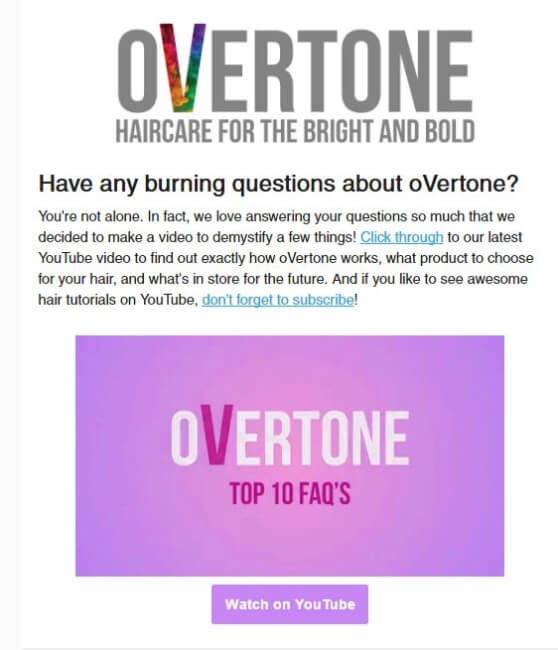
If you have offers and content on deck, you don’t need to freak out about consistency. All you need is a sense of creativity alongside the time and budget to commit to sending your messages on a regular basis.
Speaking of creativity, let’s talk about the one element that can ultimately make or break even the best email marketing campaigns on the surface.
Subject lines.
The body of your marketing emails might be immaculate; however, this means very little if nobody is opening them. Besides, having readers opt-in isn’t enough to encourage opens, especially considering the average email open rate sits around 32%.
To quote the late, great David Ogilvy, there’s nothing quite like a proper headline to pull readers in:
“On the average, five times as many people read the headline as read the body copy. When you have written your headline, you have spent eighty cents out of your dollar.”
While Ogilvy was referencing the world of print and direct mail, the same rings true in the digital world.
So what makes a “good” subject line, anyway? Although the answer to such a question is totally subjective, the best email marketing campaigns have one thing in common: they get people to open their emails.

The following headline principles are employed time and time again by the best email marketing campaigns to encourage opens:
You don’t need to be a master wordsmith or copywriter to craft strong subject lines. These principles are more than enough to steer you in the right direction.
As noted, personalization is a huge factor in email engagement.
Yet there’s more to personalization than stating your readers’ name every now and then.
An office worker receives over 120 emails per day on average.
Sure, most of those are probably spam; however, a lot of those messages probably get glossed over because the senders come off as lifeless robots instead of real people.
In response, don’t be afraid to give your messages a voice. Show off your personality in an attempt to make a connection with your list.
For example, check out this cart abandonment email from Black Milk which combines a snappy subject line with a sense of humor:
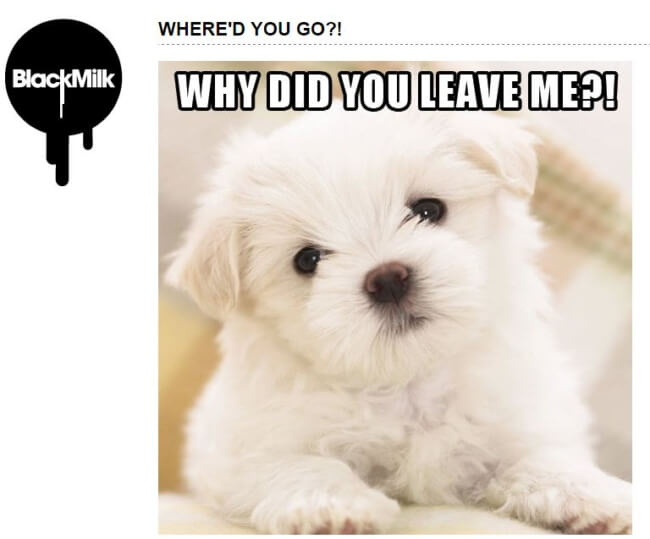
Your readers are people, so treat them accordingly. Crack some jokes. Tell a story or two. Let them know that you’re human.
After sifting through messages from hundreds of the best email marketing campaigns, I found a common thread in terms of design: “less is more.”
Minimalist style is the cornerstone of most eCommerce email campaigns.
Focusing on simple, straightforward imagery keeps your readers’ eyes from wandering too much. For example, readers are much more likely to catch your CTA if they aren’t being bombarded with a myriad of pictures.
Check out this straightforward yet sophisticated example from Warby Parker:

There are caveats to relying on images, though. For example, pictures need to be optimized to accommodate mobile devices to prevent slow-loading messages. Also, keep in mind that it’s possible that your readers have images turned off, which could spell bad news for a solely image-based campaign.
Design isn’t all about imagery, though. Sometimes the best email marketing campaigns prefer a text-based approach, especially when messages are written in a snappy, direct-response style. Check out this example from Canva:
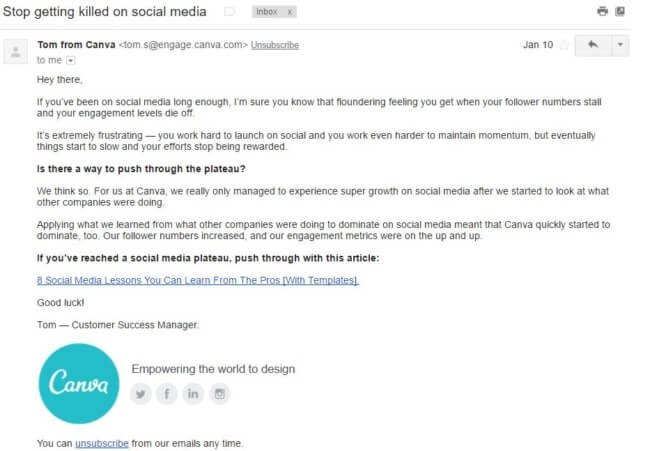
This message ticks all the boxes of a strong email without relying on images, including an eye-grabbing subject line, readable copy and a clear CTA.
Designing your emails is much less daunting when you focus on your message versus trying too hard to “wow” your readers. When in doubt, adopt a “less is more” mentality and keep your messages simple.
Flowbox’s email assets are designed to empower businesses with sophisticated tools for enhancing their email marketing campaigns. With Flowbox, you can seamlessly integrate visually engaging content from your social media channels into your emails, ensuring a consistent and captivating brand experience across all platforms. The platform offers customizable email templates that are both responsive and aesthetically pleasing, allowing you to create professional-looking emails with ease.
Additionally, Flowbox’s robust automation features allow you to personalize your communications based on user behavior and preferences, ensuring that your audience receives relevant and timely messages. Whether you’re aiming to boost open rates, increase click-through rates, or drive conversions, Flowbox’s comprehensive email assets provide you with the tools needed to achieve your marketing goals.
Curious about how Flowbox can transform your email campaigns by integrating UGC? Get your demo now!
Whether you’re selling high-end fashion or small business software, the threads between the best email marketing campaigns are clear:
There’s no doubt that email marketing can be difficult to master, especially in the crowded eCommerce space. Yet with its unmatched ROI and potential to create repeat customers, modern eCommerce brands are expected to not only nurture their list but to do so consistently and creatively.
Now you’ve learned about email marketing, why not take a look at how social media can improve your brand engagement? Check out our complete Instagram Marketing Guide.